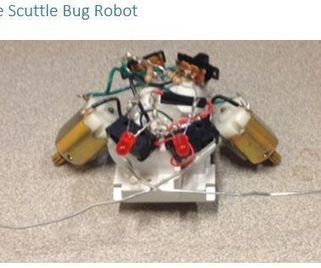Welcome to the exciting world of teaching STEM (Science, Technology, Engineering, and Math) to your own kids or for charitable work. Kids are naturally curious about how things work, and with a new trend in hardware companies creating open source hardware products, it's a great time to teach kids about electronics. But modern technology can seem too complex to even begin to understand. So where do you start?
About the Robot: This robot will run on tile, wood, laminate, low cut carpet, or other smooth surfaces. As it is designed, it will not work on extremely rough surfaces such as concrete, shag or tall carpet, grass, and such. The rough cost of this robot should be less than $10. On average, about $5~7 dollars if you look. You can find the majority of these parts on Amazon, salvage from Goodwill, garage sales, or other places..
Learn more / En savoir plus / Mehr erfahren:
https://gustmees.wordpress.com/?s=maker+practice
http://www.scoop.it/t/21st-century-learning-and-teaching/?&tag=makered
http://www.scoop.it/t/21st-century-learning-and-teaching/?&tag=makerspace
Via Gust MEES



 Your new post is loading...
Your new post is loading...











Learn more / En savoir plus / Mehr erfahren:
https://gustmees.wordpress.com/?s=maker+practice
http://www.scoop.it/t/21st-century-learning-and-teaching/?&tag=makered
http://www.scoop.it/t/21st-century-learning-and-teaching/?&tag=makerspace